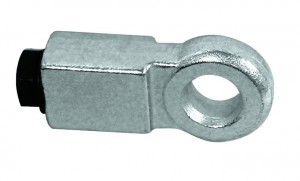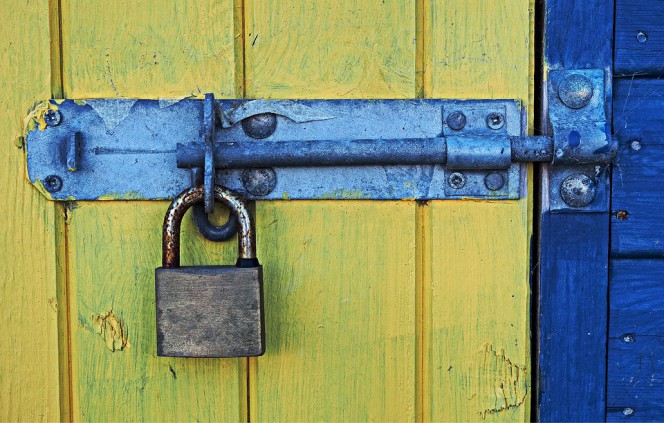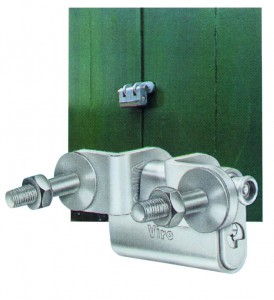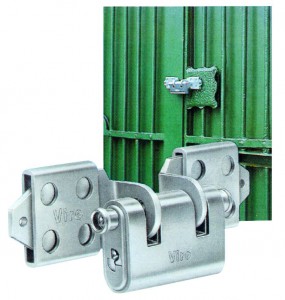“A chain is only as strong as its weakest link.” If you ever read the articles in our Security Club you will without doubt have come across this quotation several times, because it expresses well the security concept.
In terms of a practical example, even the best padlock loses its effectiveness if it is anchored to fixing points which are weaker than the padlock itself. What is the best way to increase the security of a padlock? Let’s have a look at them.
Padlocks are often seen around, even good quality ones, attached to simple eye bolts, sheet metal latches or other weak supports which, in the case of attack, offer very little resistance. Similar situations sometimes occur also in work environments, such as in warehouses which contain high-value equipment, and are thus exposed to high risks. In fact, a thief will not concentrate on the locking system, but will attack without much effort the fixing point, making the presence of the padlock simply useless.
A simple way to increase the security of a padlock is therefore to increase the strength of its fixing points. In fact, in addition to choosing a padlock which is suitable for your needs, it is essential to provide sturdy fastening accessories, to make the entire locking system efficient.
A good fixing point should not only withstand possible attacks, but it must also couple in the best possible way with the padlock to minimise the space available for the thieves when attempting to force the padlock itself with burglary or cutting tools. Padlocks and relative fixing accessories should therefore be chosen together, preferably of the same brand, to integrate well with each other.
The “essential” Viro components
Viro produces various types of fixing accessories, the so-called “Essentials”, which cover all possible use situations:
“Fixed eyelets” are suitable for use on doors. For maximum convenience and security they can be combined with a double bolt padlock. In this way it is, for example, possible to open a single rod, leaving the padlock fixed to the other one.
“Movable eyelets” can be used like the fixed ones, but they have the added advantage of compensating for any deformation of the doors to which they are connected. They are therefore recommended, for example, on metal doors which expand or shrink as the temperature changes.
The so-called “ties” are, on the other hand, suitable when you have to lock mesh gates or other metal profiles. They are therefore a more convenient and secure alternative to the chains twisted around themselves several times, which are often seen on many gates.
The Viro “Essentials“, unlike the many eyelets and rings found on the market which are made merely of iron, are made of case-hardened, tempered and galvanized steel, so as to provide a strength comparable with that of the shackle and lock-bolt of Viro padlocks, also in view of their significant size.
Its dimensions have been designed to better adapt to the Panzer armoured padlocks and the one-piece Monolith padlock.
Viro also produces, with the same principles, fixing rings for roller shutters for use with padlocks for shutters or fastening units.

The eyelets for shutters have a thicknesses designed so that, coupled together and combined with the specific padlocks, they do not leave any portion of the lock-bolt uncovered, so it is practically impossible to attack it with cutting tools.
In conclusion, when choosing a locking system it is always best to determine in advance what kind of supports it will be attached to, ensuring that they offer a similar resistance to that of the locking system itself.




